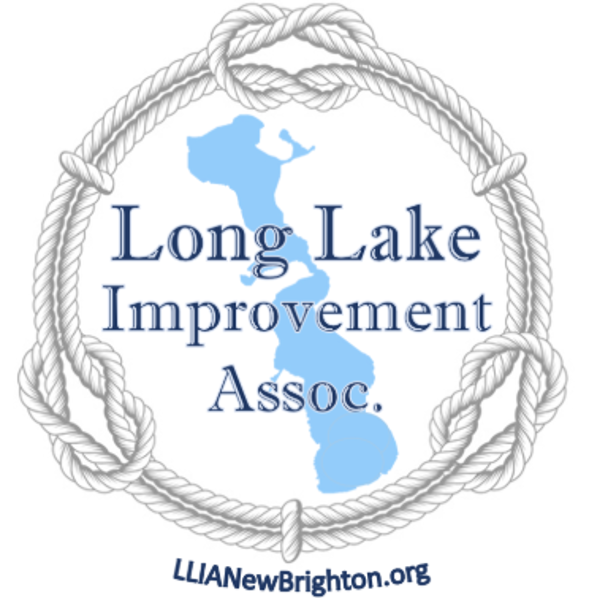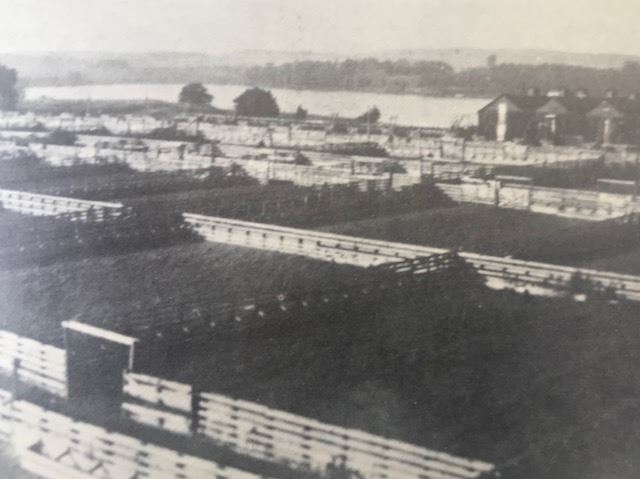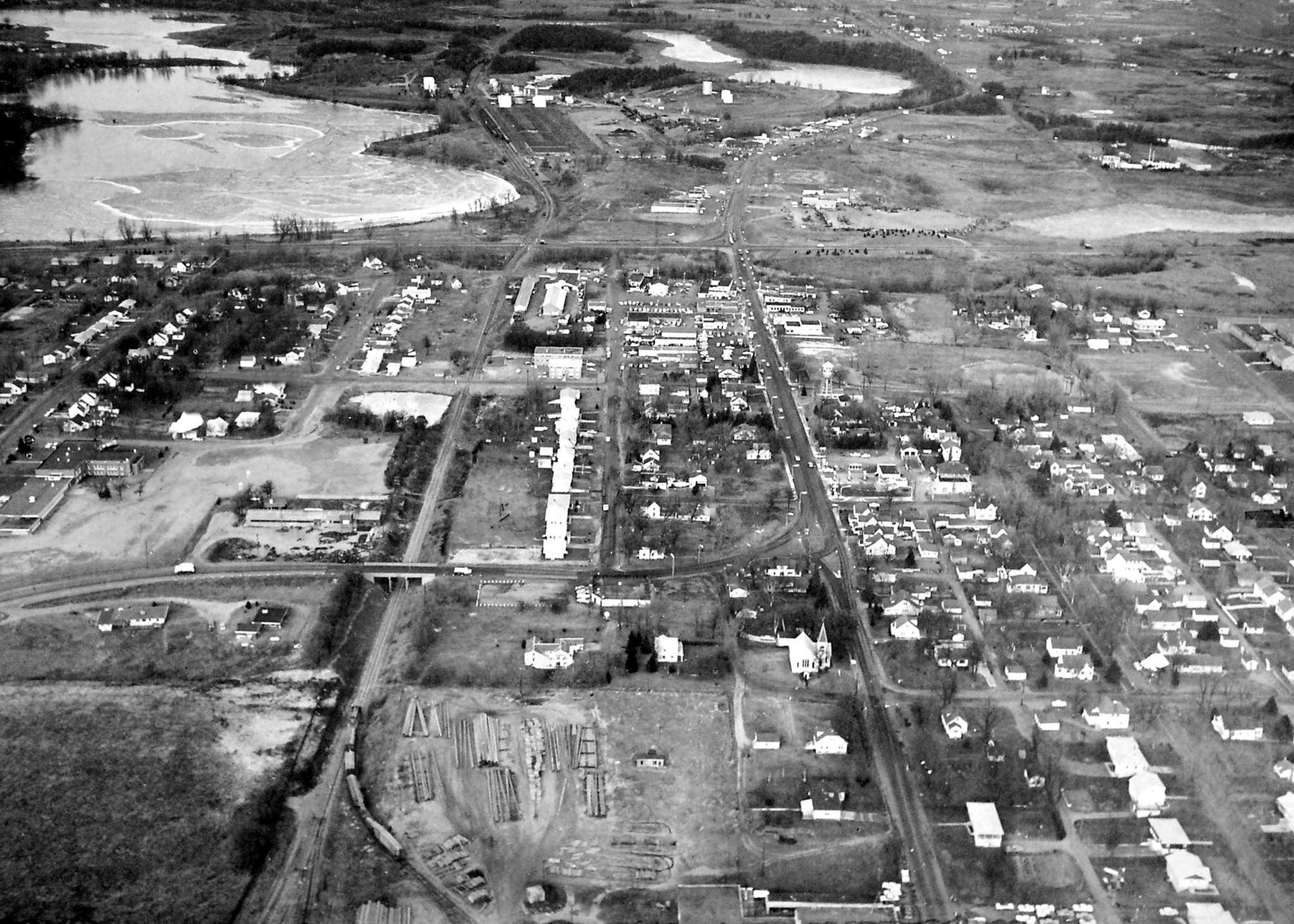|
Big thanks to the New Brighton Area Historical Society (NBAHS) who provided content and pointed us to a great book about New Brighton history; "A Centennial History of New Brighton, Minnesota" by Gene Skiba copyright 1987. This book is available for purchase at the NBAHS and Beisswengers. The photo to the right is of the swimming beach at Long Lake which was located on the south side of the lake prior to the boat launch and regional park being developed. |
|
The Glaciers Melt Most lakes in New Brighton and the surrounding area occupy depressions produced by melting ice blocks left over by the glaciers when they left the area about 12,000 years ago. If you want more information about the geological area, reference a report titled "Surficial Geology of the New Brighton Quadrangle, Minnesota" written by John E. Stone in 1966. First Inhabitants The Sioux Indians clustered around Rice Creek at Long Lake in about 1755-1760. The Indians named the lake after themselves - a lake whose name meant "people of the lake", and their village "Otonwewakpadan", or Village on a Stream. French traders called the Indian settlement "Grand Village." There is no clear record of when or how long the Grand Village at Long Lake existed, but it is thought the 1755-1760 date extending about 15-30 years till about the end of the Revolutionary War in eastern America comes close. Many artifacts such as Indian mounds containing human bone fragments and pieces of pottery, pipes, arrowheads, and other items have been found at the confluence of Long Lake and Rice Creek. The New Brighton Area Historical Society curates a large collection of stone arrowheads and spearpoints donated by Leone Langner Aronson. Skiba gives this account from early New Brighton resident Kenneth Gregson:
In 2017, NBAHS Board President David Peterson shared photographs of the collection with archaeologist Kent Bakken, the foremost specialist on stone materials used to make ancient Native American aricfacts in Minnesota. Peterson, who is also an archaeologist, suspected many were far older than the Long Lake village. Bakken confirmed this, indicating they include early Eastern Woodland types that may be as much as 1500 years old. |
The Lakeside Berry Farm Now part of Long Lake Regional Park, Peter Hipp began farming 40 acres of land on the east side of Long Lake in the 1880's. Four generations of Hipps lived on the farm. The Lakeside Berry Farm was in operation from the 1920's through the 1970's until New Brighton provided notice of vacation on May 1, 1971 and purchased the land. NBAHS sponsors an Annual Rhubarb Fest to honor the Hipp family and those that worked at the farm. Pictured on the right is the farm with homestead. |
|
| The Stockyards Rise (and fall) The Minneapolis Stockyards and Packing Company purchased a 900 acre site along the southeastern shores of Long Lake. The Stock Yards Land Syndicate bought 800 acres on the west side of the lake. The stockyards along with packing houses were completed in 1889 and could house 5,000 cattle, 10,000 hogs, 20,000 sheep, and 500 horses at its 30 acres on the southeastern location on Long Lake. By 1901, the stockyard and packing houses met their demise and over the next 10 years were dismantled and sold off. This included the Exchange Hotel which was described to be nearly as large as the Nicollet Hotel in Minneapolis. You can still see the remnants of the stockyard foundations as you walk around the lake. NBAHS requested to preserve historic remains such as the ice house and stockyard building foundations. |
Residential Development of the Western Shore
With the construction of Highway 8 and 63 (later renamed to Highway 10) in the early 1920's, New Brighton was now a convenient destination for folks that worked in Minneapolis and St. Paul. Development of the Western shore followed suit with initial development of homes and cabins in the mid-20's and the 30's. In April 1936, the New Brighton Village Council adopted a motion to build Long Lake Road to serve lake dwellers on the western shore.
Long Lake Improvement Association Organized
In 1934 Henry Rosacker and other Long Lake residents, at this point primarily summer cabins, created LLIA and explained the purpose of it to Village Council. At this point of time, rendering plants were still operational in the area and dumping waste into Rush Lake and Rice Creek. LLIA also worked with the Village Council to conduct water treatments to fight algae blooms.
Building of the Lagoon at Long Lake and Rice Creek
LOOKING FOR CLARIFICATION ON THIS. It's my understanding that the Lagoon was constructed. Property Tax Records show that houses were built on the Lagoon from 1968-1972 (Lakebrook Estates 2nd).
Long Lake Regional Park Developed
In 1981, the Metropolitan Council budgeted $1.3M for the acquisition and development of Long Lake-Rush Lake Regional Park. This land was purchased by the village of New Brighton and previously owned by farmer Joseph Hipp along with property around the farm.
In the face of considerable opposition, but support as well, the New Brighton City Council approved the Master Plan and Joint Powers Agreement with Ramsey County for the development and operation of the proposed Long Lake - Rush Lake Regional Part at the designated 200 acre tract east of Long Lake. Opposition stemmed chiefly from outside impact on the area and lake, particularity with regard to the proposed power boat launch at the relatively small lake.
Development of the park began in October 1984 and wasn't completed until the late 80's.
Modern Developments:
We've had several development projects on the southeast side of the lake that has changed the horizon, but note that Long Lake Regional Park owns the actual lakeshore.
- 2007 - API Group develops it's headquarters on the southeastern shore of the lake
- 2013 - The View Apartments at Long Lake built on the southeastern shore
- 2015 - The Enclave developed on the southeastern shore just north of The View apartments consisting of over 100 homes.
- 2017 - Located just south of Long Lake Park and north of The Enclave, Lion's Park includes a softball field, lacrosse multi-purpose field, play area, trails and related amenities.
----------------------------------------------------------------------------------------------------------------- The view shown below is looking south to north in circa 1962 with the following landmarks visible. Note the railroad tracks which bisect the town of New Brighton. The old New Brighton School is shown left of center. The New Brighton Community Church is shown lower center with MacGillis and Gibbs Pole Yards south of it. Old Highway 8 goes west to east through town and then south to north. Mid-center is the New Brighton Lumber Company, and north of that, are the cattle pens of the old stockyards, which were still in use in the 1950's.
|
 New Brighton, MN ~ Ramsey County
New Brighton, MN ~ Ramsey County


